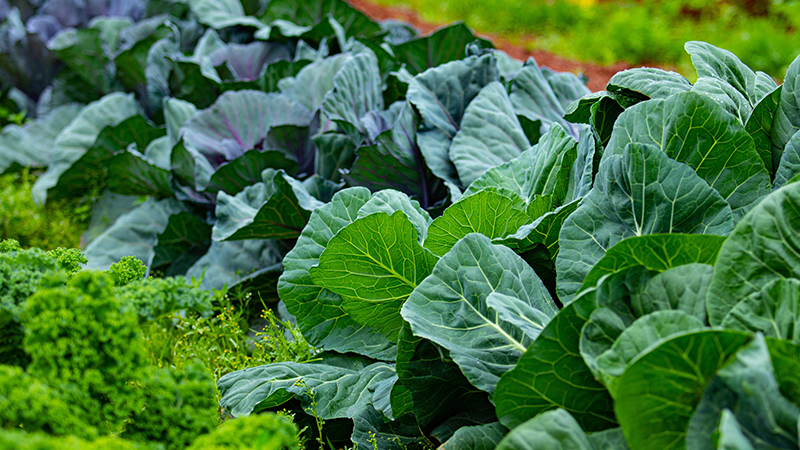Figuring Out The Food Safety Modernization Act
After nearly a year following the closing of the final comment period for the Food Safety Modernization Act (FSMA), the FDA is poised to announce the final Produce Safety Rule in accordance with the original timeline.
The comment period, which began in September 2014 and closed in December 2014, accepted comments on previous revisions to FSMA, which included increased flexibility on water quality and standards, clarifying provisions on wild animals, and increased definitions on which farms were covered or exempt.
The question is: Are you prepared for any and all regulatory requirements to assure compliance for your operation moving forward?
Here, Betsy Bihn, director of the Produce Safety Alliance (PSA), and Gretchen Wall, PSA coordinator, outline key points for GenNext Growers and seasoned growers alike to keep in mind as the new rule rolls out.

Betsy Bihn
What aspect of the final Produce Safety Rule do you think will be most challenging to growers?
Bihn and Wall: From experience in training a variety of growers, both large and small, and based on the current proposed Produce Safety Rule requirements, understanding and determining agricultural water quality including water testing may be a challenge. Other topics such as using raw manure management and application, establishing compost protocols, and developing effective sanitation programs for equipment and postharvest water also could be challenging.
What are the five most important things growers should do to get their operations prepared for the final rule?
Bihn and Wall:
1. Stay up to date.
The best way to prepare is to stay informed on FDA’s progress in releasing the final Produce Safety Rule, including participation in FDA-hosted public meetings, webinars, or other opportunities to learn about the final regulation and how it might affect your farm. Sign up for FSMA updates from FDA or subscribe to the Produce Safety Alliance’s general listserv to receive more information about the final regulation release, educational resources, and training opportunities.
2. Understand that produce safety impacts your farm.
Whether the regulation applies to your farm or not, it is likely produce safety will impact farms either through buyer requirements or through increased public awareness of the new regulation. Produce-related foodborne illness outbreaks not only affect those who become ill, but also those who grow the commodities because these outbreaks impact consumption trends and market prices.
3. Attend a GAPs training.
Even if you are not subject to the final FSMA Produce Safety Rule, all fruit and vegetable growers should know some basic produce safety information to reduce risk. You can find more information about collaborator training programs through the National GAPs Program and the Produce Safety Alliance.
4. Write a farm food safety plan.
While the proposed Produce Safety Rule does not currently require growers to have a written farm food safety plan, it is a valuable thing to do. A written farm food safety plan can help get the farm organized and ensure food safety tasks are being completed, as well as prepare growers to meet markets that require third-party audits.
To participate in an audit, a farm will need to have a written farm food safety plan. The plan should reflect practices your farm is actually doing. Start small by assessing produce safety risks on your farm and prioritizing which risks should be addressed first. A prioritization checklist has been developed and can be found through the Decision Tree Project.
5. Do a little bit at a time.
Although food safety may seem like an overwhelming topic, there are practical and manageable ways to incorporate food safety practices on the farm. Set realistic goals such as “This week, I am going to talk with my harvest crew for 10 minutes about cleaning and sanitizing harvest tools and totes. Next month, I will write a section of the farm food safety plan.” Take advantage of downtime and attend a GAPs training course if you need some help getting started.

Gretchen Wall
What’s your advice for GenNext Growers and beginning farmers?
Bihn and Wall: New or beginning farmers actually have an advantage in some situations because food safety may have always been part of the farming conversation. GenNext farmers also are just getting started, so they may be more open to new food safety ideas. As farms develop and refine production practices, packing, handling, and marketing methods, food safety should be kept in mind and incorporated. This means planning ahead and knowing the long-term goals of the farm.
Ideally, we will see interaction between experienced growers and GenNext Growers since they both have valuable knowledge and perspectives to share that could benefit food safety implementation on all farms.
Are there any unforeseen ways the final Produce Safety Rule may affect business for growers?
Bihn and Wall: Though FSMA is a hot topic right now, it is important to remember that up until this new regulation, produce safety demands have mostly been driven by buyers. Understanding and implementing food safety practices is not just important for meeting regulatory requirements, but meeting market demand. It is quite possible that even small market venues may require food safety practices — affecting those growers who might be exempt or not covered by the regulation.
Any other pertinent information or developments growers should know about?
Bihn and Wall: The Produce Safety Alliance, along with University collaborators in 44 states, industry partners, grower organizations, and colleagues at USDA and FDA, have been committed to developing educational materials and training to assist growers in learning about GAPs and how to comply with the final regulation.
After the release of the final regulation and shortly after the new year, the PSA will be hosting Train-the-Trainer and Grower Training Courses. For more information, visit Producesafetyalliance.cornell.edu and sign up for our listserv to stay up to date with PSA activities.








